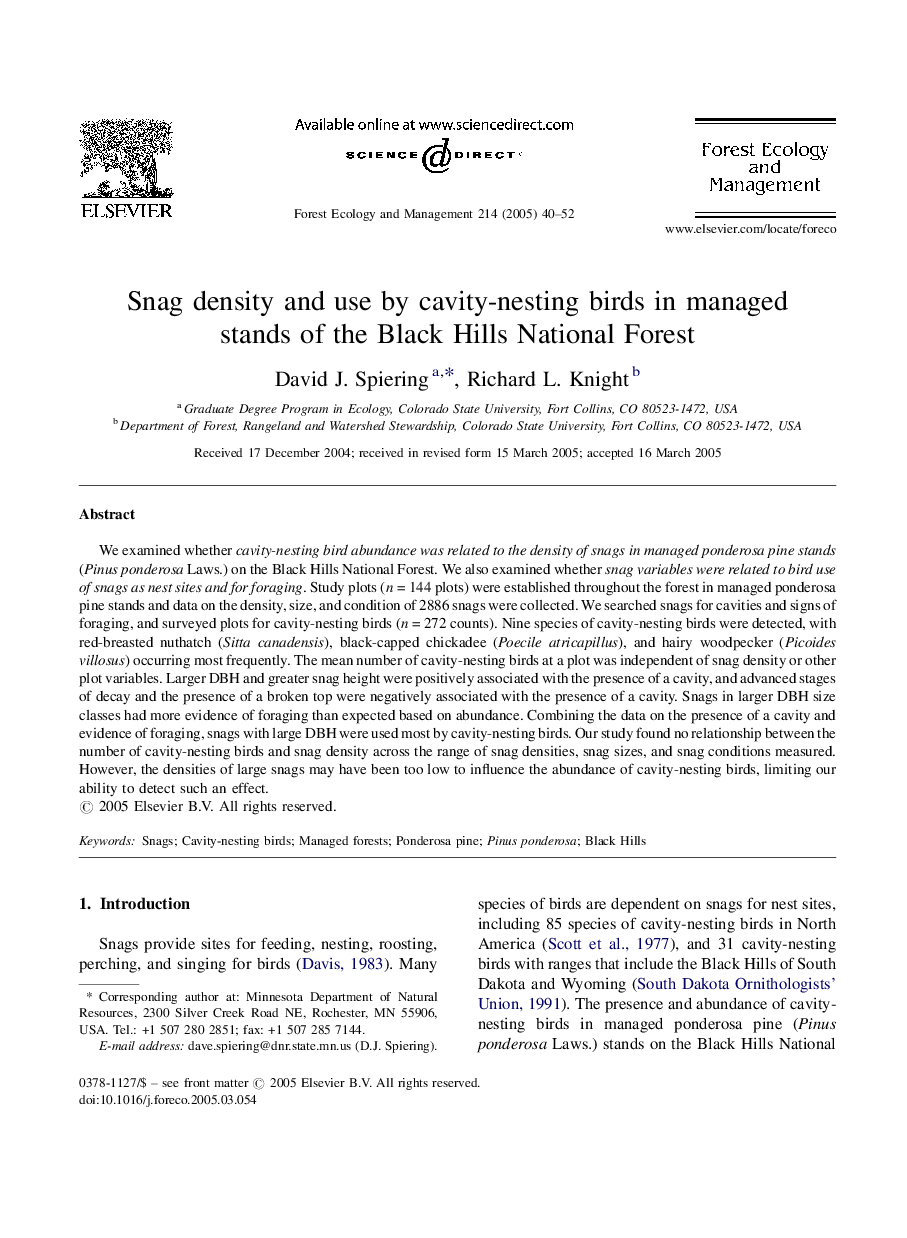| کد مقاله | کد نشریه | سال انتشار | مقاله انگلیسی | نسخه تمام متن |
|---|---|---|---|---|
| 9620228 | 159398 | 2005 | 13 صفحه PDF | دانلود رایگان |
عنوان انگلیسی مقاله ISI
Snag density and use by cavity-nesting birds in managed stands of the Black Hills National Forest
دانلود مقاله + سفارش ترجمه
دانلود مقاله ISI انگلیسی
رایگان برای ایرانیان
کلمات کلیدی
موضوعات مرتبط
علوم زیستی و بیوفناوری
علوم کشاورزی و بیولوژیک
بوم شناسی، تکامل، رفتار و سامانه شناسی
پیش نمایش صفحه اول مقاله

چکیده انگلیسی
We examined whether cavity-nesting bird abundance was related to the density of snags in managed ponderosa pine stands (Pinus ponderosa Laws.) on the Black Hills National Forest. We also examined whether snag variables were related to bird use of snags as nest sites and for foraging. Study plots (n = 144 plots) were established throughout the forest in managed ponderosa pine stands and data on the density, size, and condition of 2886 snags were collected. We searched snags for cavities and signs of foraging, and surveyed plots for cavity-nesting birds (n = 272 counts). Nine species of cavity-nesting birds were detected, with red-breasted nuthatch (Sitta canadensis), black-capped chickadee (Poecile atricapillus), and hairy woodpecker (Picoides villosus) occurring most frequently. The mean number of cavity-nesting birds at a plot was independent of snag density or other plot variables. Larger DBH and greater snag height were positively associated with the presence of a cavity, and advanced stages of decay and the presence of a broken top were negatively associated with the presence of a cavity. Snags in larger DBH size classes had more evidence of foraging than expected based on abundance. Combining the data on the presence of a cavity and evidence of foraging, snags with large DBH were used most by cavity-nesting birds. Our study found no relationship between the number of cavity-nesting birds and snag density across the range of snag densities, snag sizes, and snag conditions measured. However, the densities of large snags may have been too low to influence the abundance of cavity-nesting birds, limiting our ability to detect such an effect.
ناشر
Database: Elsevier - ScienceDirect (ساینس دایرکت)
Journal: Forest Ecology and Management - Volume 214, Issues 1â3, 3 August 2005, Pages 40-52
Journal: Forest Ecology and Management - Volume 214, Issues 1â3, 3 August 2005, Pages 40-52
نویسندگان
David J. Spiering, Richard L. Knight,